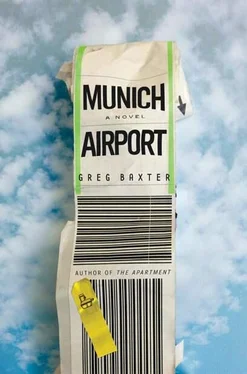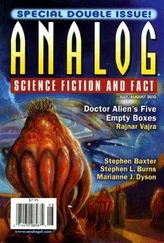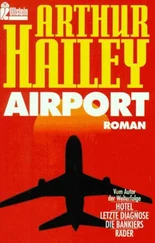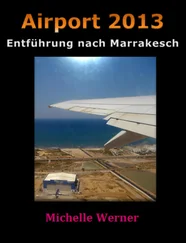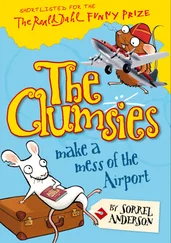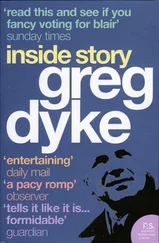Yes? Do I know him?
Probably not, I said. I mentioned my father’s name, and Klauser said, I’m afraid it isn’t familiar to me.
His father may have died here, I said.
He glared at me sharply. I’d antagonized him. Perhaps he thought I would ask him to do some work for me. He said, finally, Many people died here.
My father didn’t have the energy to walk back up the steep hill, so he sat on a swing in an empty playground while I retrieved the car. When I picked him up, he said, It’s funny, that guy’s whole career is this little museum, and the local history of this town and surroundings, which wouldn’t even be on the map but for the war, and two people come in and ask him to talk about the one subject he ought to have considerable expertise in — the war — and he has a budget meeting. That’s your local historian in a nutshell, he said. Where to now? I asked. Got me, he said.
What about this museum in Diekirch?
What about it?
They’ve re-created battle scenes in dioramas, look.
I gave the brochure to my father and he said, Oh dear, that looks awful.
And it was. But it wasn’t awful in the way we — or at least I — expected it to be, which was like the basement of a crazed old man who believes he is the veteran of many wars in many centuries, and who wears a helmet and a belt full of live grenades to bed. It was a little like a crazed basement — because it was a private collection before it was a museum — but the exhibits were vast, orderly, and exhaustive. It generated sorrow in me, the way that one pathetic, creepy, artificial diorama after another finally, by sheer repetition, attained a grotesque, or inverted, lifelikeness. I started on the ground floor, and I had no idea how colossal it would be. I was standing in front of a diorama — all were on the scale of one to one — that depicted a scene of German soldiers in a bunker. Two soldiers were working on a radio. One was making coffee. From down a stone-walled spiral staircase beside the diorama, a group of people was coming, speaking English. It was a tour. The tour guide was American. The people in the group were English, a family. The guide, who turned out to be one of the founders, was telling them about the history of the museum. He and two other collectors had joined their collections to create the largest collection of Second World War memorabilia in existence. It’s fascinating, said the English man, earnestly. All we needed, said the founder, was the space, and the Luxembourg government was very keen to give us this one, we love it. I butted in on their conversation. I said, It’s a terrific space. They gave me uncertain looks and moved on. It was my good luck that they came down that staircase, because when I first saw it, I assumed it was for staff only. I hadn’t realized the museum was on multiple levels. It was a strange assumption, seeing as the structure, from the outside, was so obviously large, but I guess I felt that nobody could possibly fill up a structure that size with so many of the same uniforms, weapons, and vehicles. But it was on six levels, two below the ground floor and three above it. And each level was a sprawling series of twists and turns, big rooms and small rooms, scenes of daytime and nighttime, indoors and outdoors, in battle and at rest. Except for the ground floor, the rest of the museum was dimly lit, and there were no windows, which gave you the impression that you shouldn’t be there, that the place was closed. The brochure stated that the dioramas were meant to illustrate the technical and logistic evolutions within the armed forces of the belligerent parties, which I assumed was a bad translation of French, or Luxembourgish, or perhaps just bad English written by a Luxembourger. Furthermore, it stated, the museum intends to maintain high respect and gratitude on a national level for all the soldiers who died for the liberation of Luxembourg, first of all on the American side. Furthermore, as a place of gathering for Allied and German veterans, the museum conceives itself also as a provider and mediator of the reconciliation by its commitment on the European and world stage. The museum is now offering workshops for children, it is a center of education. At the entrance, on a tall standing display, there was a blown-up version of an official letter, in Luxembourgish, with English, French, and German translations running down a column beside the letter, declaring that the Luxembourgish authorities have decreed that this museum serves a public purpose. These words — respect, gratitude, reconciliation, public, education — were exactly what the place was missing. In their place was the superficial thrill of fake engagement, fake learning. In one room there was a sniper on a high telephone pole. Obviously it wasn’t the entire telephone pole. Just the top third or so. I ran into my father in that room. We had separated upon entering, as you do in museums. I found him looking up at the sniper. Hey, I said. Hey, he said. What’s that? I said. A sniper, he said. I looked up. I could not see anything, just a bunch of metal and leaves. And then I saw him. Oh, wow, he’s well hidden, I said. My father said, Do you have the keys, I think I may go for a rest. It’s a very strange museum, isn’t it? I said. It sure is, he said, and I think I’ve had enough.
But we were only on the ground level. He left and I stayed. I found a huge room with a diorama of US soldiers marching behind some jeeps in snow. The walls were black, the light was way down, except for a diffuse, artificial moonlight that made the white coats of the soldiers glow. They were up to their knees in snow. They leaned forward, as though marching into a gale. And all around this massive scene in the middle of the room were smaller dioramas along the walls. One of them seemed to re-create the themes of a manger scene. Another was of men trying to get an armored personnel carrier unstuck from some muddy and snowy terrain. There were men cramped inside the APC, and there were men outside the APC, an officer and some enlisted men, trying to figure out a solution. Every soldier wore an expression. An artist had given them faces. Faces that expressed what it might be like to march in heavy snow with cold feet, or to be thirsty, or to need to go to the bathroom, or feel homesick, or attempt to solve a problem, or be afraid, or feel courageous. Except that each expression was slightly off, so that the man cooking himself some beans in a manger needed to go to the bathroom, and the man trying to solve the problem of the stuck tire was afraid. This made every scene — which was otherwise at a level of detail that was staggering — just incoherent enough to be ghoulish. That was on the second level, and I thought that snow scene might have been the centerpiece — it was on the cover of the brochure — but then I found another dozen scenes just as grand. I went all the way up to the top and found a scene of soldiers firing howitzers and antiaircraft guns. On my way down, I found many rooms I hadn’t seen on the way up. When I got back down to the ground level — having not yet explored the two levels below — I found a new corridor that took me to a room the size of an aircraft hangar. In it was everything they could not fit into the rest of the museum. It was a little bit like that moment, in science-fiction films, when our hero stumbles through a doorway to discover the scale of the evil alien enterprise, the space where they keep the million or ten million human bodies, et cetera. There were howitzers, tanks, APCs, cargo trucks, jeeps, fire engines, cars, airplanes, bombs, shells, and other ordnance, gas cans, shovels, mortars, helmets, flamethrowers, and more, all crammed together in a space that could have housed a couple of commercial airliners. But there were no dioramas. I left. I was a little embarrassed for having been so enthralled by everything, and when I knocked on the glass of the passenger window to wake my father, a few hours after he had departed, now in the darkness of night — the museum had actually closed — he asked me where I’d been, and I lied and told him I’d gone for a walk around Diekirch. Did you find anything good in that enormity? asked my father, as I got in beside him, started the car, and plugged in the GPS. The evening was warm, and I rolled the windows down to release the smell of stuffiness. I did, actually, I said. There was an interesting letter written by a soldier, they identified a man from a photograph and contacted him, a Roy Lockwood, and he wrote a letter back about his experiences, I said. Roy Lockwood, said my father, slowly, as though he was supposed to know the name. Anyway, I said, it was a good letter. Well, said my father, I’m glad.
Читать дальше
